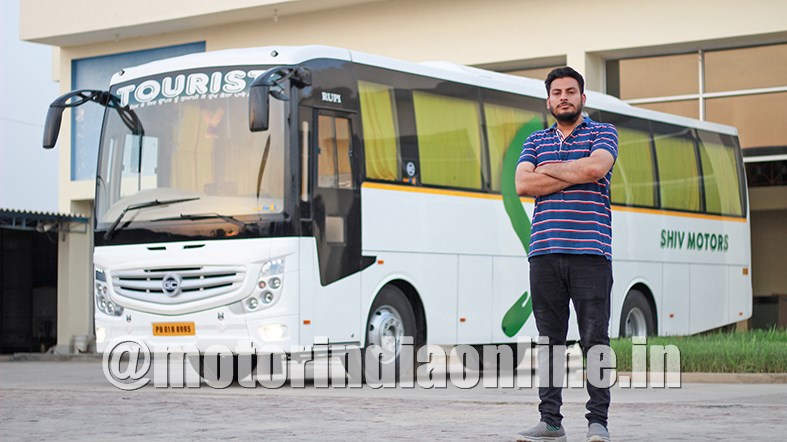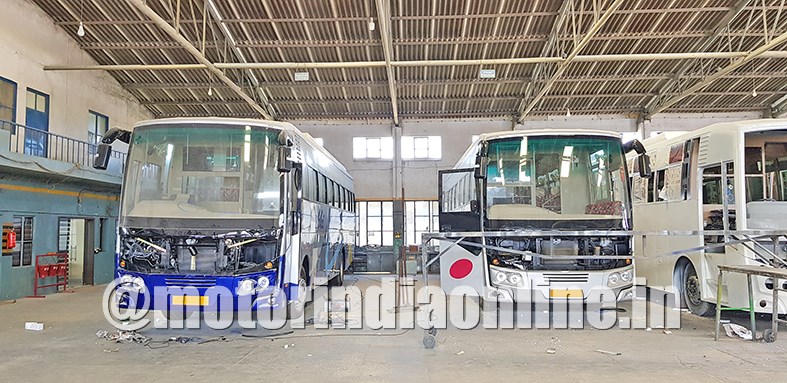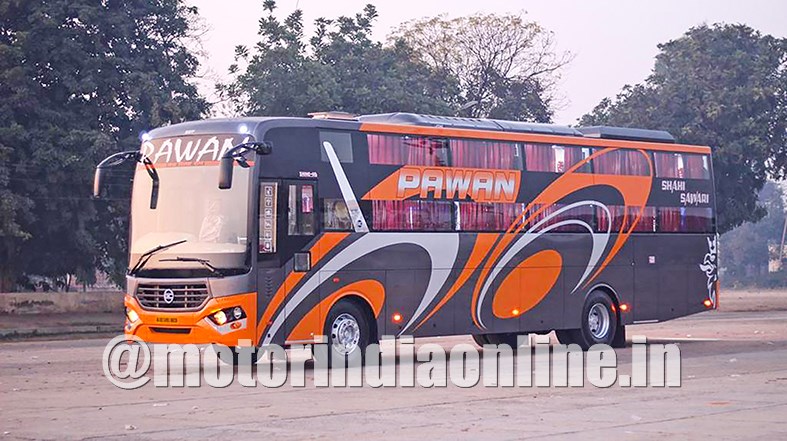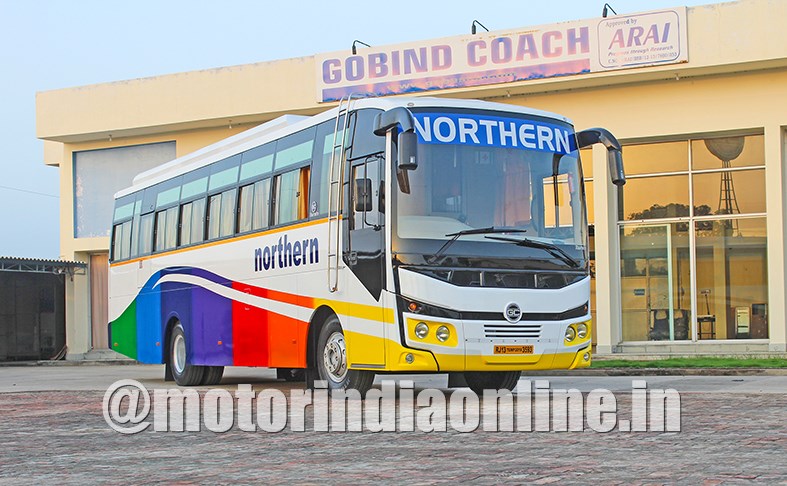Karmjeet Singh, Managing Director, Gobind Coach Builders, in this interview with Shivam Gautam, opens up about how technology and constant innovation have helped the company to keep pace with the changing times as well as the disrupting dynamics of the bus industry in India

When I first stepped into the factory of Gobind Coach Builders, I was mesmerised not only by its sheer size but also by the professionalism that greeted me. I had been in the small town of Bhadaur for the last two days and had visited quite a few bus body builders, but the very first impression of Gobind Coach Builders assured me that there was something special about the company. And as I found out later, I was right. For the uninitiated, Bhadaur is a small city in the Barnala district of Punjab. What makes Bhadaur stand out on the map of the State is its impressive bus body building tradition. With about 30 bus body builders dotting the sylvan suburbs, the otherwise nondescript city is home to some of the best bus body builders in India.
“Bhadaur has a rich heritage of bus body building,” states Karmjeet Singh, Managing Director, Gobind Coach Builders, as he walks me to his office. “Back in the 1980s we were fleet operators. Since there were no builders around at that time, we were compelled to build the body of one of our own buses once. It was in the year 1987, and the whole process was a big success. Soon, other bus operators started coming to us with orders. Honestly, that’s how the whole bus body building industry of Bhadaur took shape,” he adds. Today, armed with ARAI accreditation, ISO certificate and AIS 052 approval for bus bodies, Gobind Coach Builders has made its mark in the Indian bus body building industry with its range of luxury buses, STU buses, school and college buses, and special purpose vehicles.
Technology as the backbone
As we walk through the factory, the one thing that impresses is the sound infrastructure and the technological prowess that Gobind Coach Builders lends to its operations. The factory sprawls across a wide area and is systematically segregated into different departments – structure building division, panelling unit, designing unit, research and development department, a modern painting booth, a state-of-the-art shower testing unit, etc. There is also a separate building that houses the company’s ABS thermoplastic polymer works.
“We are among the very few builders in India, and the only one in Punjab, that manufactures our own ABS, which we use exclusively for our interiors. ABS has high tensile strength and is very resistant to physical impacts and chemical corrosion. This ensures that the finished product can withstand heavy usage and adverse environmental conditions – something that is of primary importance in public transport,” points out Singh.
Apart from cutting-edge bending machines, rolling machines, power presses and many other special purpose machineries, I was fairly surprised to see a slew of what could be clearly distinguished as indigenously developed machines. “We have a lot of machinery that we have designed and fabricated in-house to execute simple tasks. This helps us save time, cost and efforts as well as minimise human intervention, thereby allowing us to as maximise performance and quality,” Singh states.
Design and quality
Personally, I hold that the aesthetic appeal of a bus is the primary factor that distinguishes a bus body builder. True that strength and quality are the main aspects of a bus body from a safety point of view, but at the same time we all have to agree that it is the ‘look’ that succeeds in turning heads and raising questions. While aesthetics are subjective, Gobind Coach Builder’s latest luxury model Tourista has been successful in embossing the gold standard by which bus designs are measured today. A brilliant mix of aerodynamics, muscularity and delicacy of details, Tourista is the best expression of the company’s current design language.
“The traffic in India is very dense and to design a bus body that turns heads, it is an uphill task that demands immense perseverance. We study the market and the requirement of the customers keenly and talk to engineers and designers, thereby combining their inputs with our DNA to come up with new designs that are practical and visually rich at the same time. All designs are executed on cutting-edge software like Coral Draw, Auto Cad and Catia,” Singh elaborates. The Tourista range is available for both seating as well as sleeper coaches. Apart from Tourista, Gobind Coach Builder’s new models include Gold Star and Shine HD, the latter only available for sleeper coaches.
Despicable road infrastructure is an ever-present malady of the Indian sub-continent. As a result, bus body builders in India are compelled to double check the strength of body structures. At Gobind Coach Builders, precautionary measures to guarantee this start right from the beginning when the structure is developed. “We utilise only the best grades of raw material to ensure a solid overall product – 310 YST grade steel, equivalent quality aluminium, reputed seat brands like Grand Slam, Harita, etc. We also provide gussets to reinforce the body. Moreover, our models are built only as prescribed by the Automotive Research Association of India (ARAI), which ensures that nothing but the best is delivered to our clients,” adds Singh. The company has recently installed a fixture system to improve the overall quality of buses.
Core markets and future plans
Gobind Coach Builders has a very strong market in the northern part of the country. Within this region, Punjab, Haryana, Delhi and Himachal Pradesh have traditionally been the company’s strongholds and still remain so. However, over the last few years, the company’s aggressive designs and sturdy quality have helped pave its way into newer markets like Jammu and Kashmir, Assam and Maharashtra. “The Tourista model was exceptionally well-received, both look and quality-wise. And we have been aptly rewarded for all the time and effort we dedicated in designing this model. It has helped us to expand our footprint into the States of Maharashtra, Jammu and Kashmir, and even the North East,” states Singh.
As a whole, the bus industry is India is going through a sea of changes. With new rules, new players and a new breed of consumer, the bus industry is constantly undergoing disruption and revolution. The modern passenger is aware and very vocal about his demands. The pressure of meeting his growing demands trickles down to bus body builders, who are compelled to exercise routine innovation and maintain an upgraded product basket. “Times have certainly changed. The young passenger base demands the latest in comfort and facilities in a bus, and it’s ultimately us who have to fulfil it,” Singh states.
“Many new players have entered the market and customers expect unique designs at competitive prices. As such, there is a lot of pressure on us at the moment. On the other hand, there has been no significant support from the government either,” he adds. But as is often told, every cloud has a silver lining. A growing base of consumers with high aspirations and stiffening competition are clear indicators of a market that is constantly growing. As the competition increases, all stakeholders of this industry are compelled to ante up their offering, resulting in an overall increase in quality and efficiency of the entire industry itself, propelling it to the next level.


